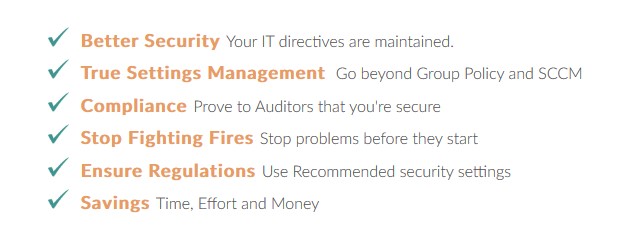* – This article has been archived and is no longer updated by our editorial team –
PolicyPak Software recently released findings on the challenges and impact of migrating to Windows 10. The 2018 State of Windows 10 Migration Challenges Report, based on survey data from IT administrators, examines the experiences of migrating from Windows 7 to Windows 10, including the most common migration issues and remediation methods.
Below is our recent interview with Jeremy Moskowitz, the Founder and CEO at PolicyPak Software:

Q: With Windows 7 retiring in early 2020, organizations are beginning to feel the pressure to get migration projects completed, can you explain the implications organizations face?
A: Microsoft will implement Windows 7 end of life in January 2020, meaning it will discontinue all support, including paid support; and all updates, including security updates. That being said some companies can pay big bucks thru 2023, but most won’t. They’ll just run unsupported like they did with XP, which is strongly discouraged. Most companies are well aware of this, however migrating to Windows 10 isn’t as easy as flipping a switch. Windows 10 has to be reasonably well planned.
 Recommended: Asia Innovations Group Brings The Next Generation Of Mobile Experiences From Asia To The World
Recommended: Asia Innovations Group Brings The Next Generation Of Mobile Experiences From Asia To The World
Q: Describe the challenges organizations are facing.
A: While Microsoft provides tools to automate each step of the process, many organizations, find the challenge isn’t in the upgrade of the operating system; it’s in the standardization of the user workspace once on Windows 10. Furthermore, it’s ensuring all those configuration settings, applications, printers, and security are all set up in a way that balances IT’s need to provide a protected work environment with the users’ need to be able to work in that environment.
There’s a lot that goes into an OS migration. Decisions around hardware, applications, timing, training, and more, all need to be considered as an organization plans out what will prove to be a very long migration project. Microsoft has taken great strides to provide the simplest of migrations, but some aspects of Windows 10 that are key to user productivity and system security, do not migrate in an automated fashion.
Q: What did the findings of your survey reveal?
A: Our goal with the survey and resulting data was to understand the limitations that are impacting migrations and help those beginning to walk the path towards Windows 10.
For example, the data revealed that due to the end of Windows 7 support, most organizations, are aware of the need to migrate to Windows 10. SMBs represent the highest percentage of organizations that are well in the process of migrating (42%) and large enterprise organizations report that they are still in the pilot phase of migration planning. Additionally, the majority of organizations surveyed, more than 57%, chose to manually update a given system or allow users to update the files and application associations themselves. With regard to local admin rights, SMBs were the most concerned about malware attack concerns (52%) and the least concerned about compliance (less than 5%).
Q: Are all organizations preparing for the migration – or just specific industries?
A: Across every industry vertical and size, we found businesses at some point in the Windows 10 migration process. On average, we found an almost perfect distribution of organizations planning their move, in a pilot, mid-stream in their migration, or are near or at completion. It’s only when we looked by organization size that we see which organizations are more and less aggressive about their migration timelines.
The limitations and challenges are real. The good news is businesses can solve these challenges by being proactively aware that the challenges exist and planning how your organization will address the problems – whether using native solutions or third-party tools. Use the time to devise a plan that also addresses the issues outlined in this report. By doing so, you may be able to avoid the headache and delays associated with each challenge.
Activate Social Media:


 Recommended:
Recommended: 